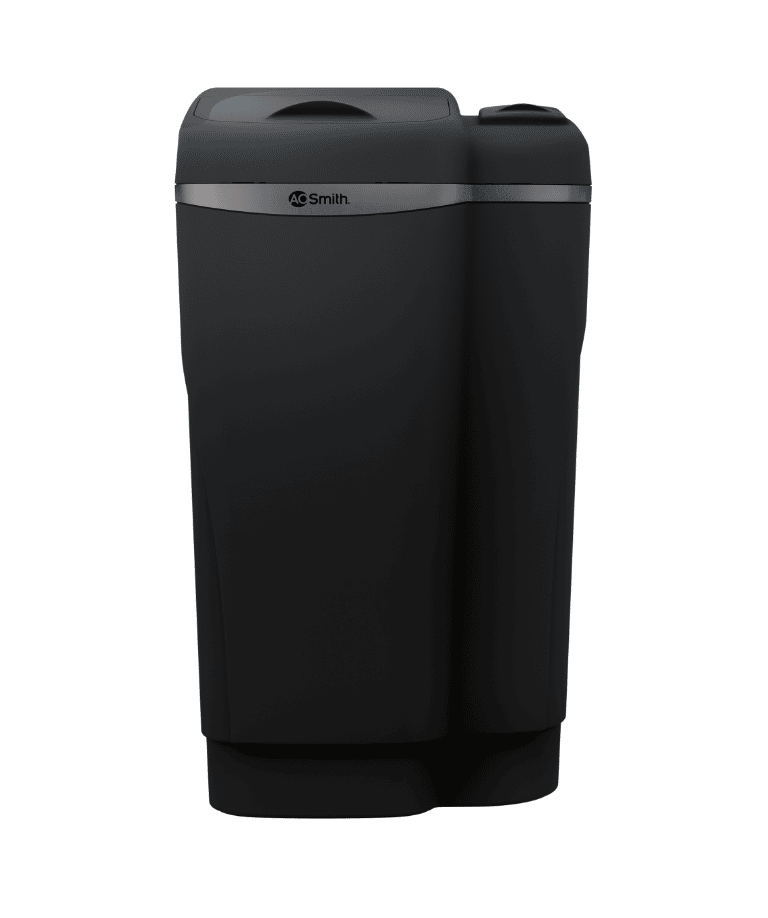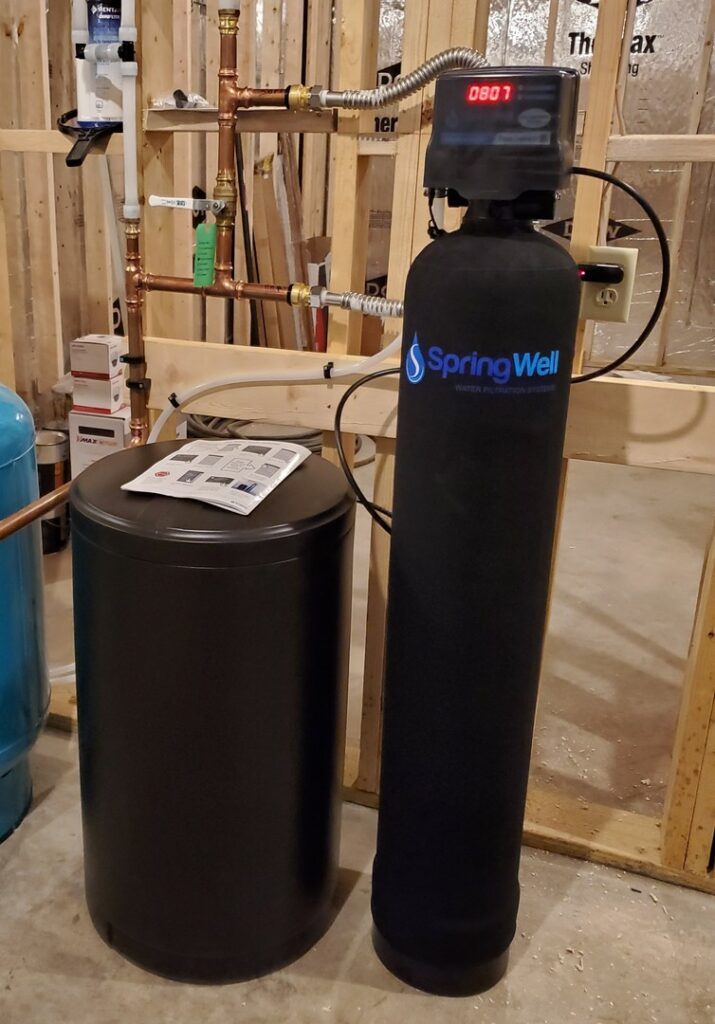Water softener units come in a wide range of prices. Searching for these devices online can lead you to products that start at the $200 mark and go up as high as $6,000. That’s a huge price difference, but the reason behind it is the capability and features of the devices themselves.
While prices differ from unit to unit, portable models will usually cost you between $200 and $800, while whole-house models will set you back something between $800 and $3,000 and above.
There are plenty of factors to consider before buying a water system that have a direct impact on the unit’s price tag. Today, we’ll go through the most important ones, which will help you determine whether the price of the product you want is bloated or the unit is worth every penny.
Let’s see what you need to know about water systems’ prices.
No Upfront Costs Listed
One of the biggest issues that consumers seem to have with water softeners is that a lot of brands simply don’t list any of their prices on their sites.
Brands like AO Smith and Rheem are upfront about how much their units cost, whereas other brands like Kinetico don’t list any of their prices on the site or on any online store where these units are sold.
What most water softener manufacturers do is add a survey on their site where you can send a message to the company, after which they give you a quote for the cost of the model that you want to get.
The advantage of this system is that you can fill out all of the relevant information about your home and the area in which you live. The company can then review the data and not only figure out which model would be best for your purposes but also estimate everything, from the shipping to the installation costs.
This makes the quote that you get a lot more accurate than most site-listed prices that generally don’t include installation costs and often don’t even include the price of shipping the unit to the city where you live.
The disadvantages of this system are convenience and privacy concerns.
The process is quite long, and it’s frankly inconvenient for people to wait just to get a price that’s way out of their budget.
Second, and more importantly, people are asked to trust a random site with their personal information, such as their address and household information.
In fairness, you still might need to enter the same information into the site if you decide to make a purchase. However, if you decide to go with another brand, then you’ve just jumped through a lot of hoops and revealed a lot of personal info just to figure out that you don’t even like the unit that you were asking about.
Different Hardness Levels

Water hardness is determined by a measurement called grams per gallon (GPG), and it calculates the amount (in grams) of hard minerals that are present in a gallon of water. You find out the hardness level of your tap water by getting a water testing kit.
Water hardness levels will vary depending on the area that you live in. Each water softener model can handle certain hardness levels (GPG), and if you’re trying to get them to handle something out of their range, then their efficiency lowers.
As you might have guessed, models that can handle more GPG are more powerful and, therefore, a bit more expensive.
The price doesn’t proportionally rise as the GPG increases, but even similar models from the same company will differ in price depending on this factor. For example, the Waterboss 700 can handle up to 70 GPG and costs $530, whereas the more powerful Waterboss 900 will set you back $580 but has a max hardness rating of 90 GPG.
20 GPG might not seem like much, but it can honestly make quite a big difference when it comes to whether or not your tap water gets softened or still contains a lot of hard minerals.
We bring this up to say that the extra $100 between similar models with different GPG capacities is usually worth it to make sure that the model is capable of softening your tap water at the level you need.
Portable Models

The term portable water softener is pretty nebulous as some models can be as small as a coffee flask, while others can be the size of a laundry hamper. Rather than their size, what makes portable models what they are is that the brine tank and the filter are both in the same housing.
More specifically, standard whole-house models have two tanks – the brine tank and the resin tank, and both of them are separate. However, portable units essentially only have one tank or one housing that fits both the brine and the resin tank inside.
Portable models are ideal for apartments or small homes where you don’t have all that much space to work with and you can’t install a full-sized water softener unit. Under-sink models like the APEC Water Systems or the OTG3NTP3M portable bottle model really shine in these cramped spaces.
They’re also a good bargain since the APEC model costs only $210, whereas the OTG3NTP3M is even $20 cheaper and comes in at $190. However, while they’re cost-effective and don’t take up a lot of space, these models aren’t really suited for areas that have a high concentration of hard minerals. Their GPG capacity is 50 and 25, respectively.
Luckily, there are also portable water softeners like the AO-WH-SOFT-PRO-500, which takes up slightly more space, but can still fit into any apartment and can handle up to 90 GPG. This model will cost you $849, and while it’s more than three times the price of the previous two models, it’s still very reasonably priced by any standard.
Whole-House Models

Whole-house models are much larger than portable units, and they have a brine tank that’s separate from the resin tank. Other than that, most whole-house models significantly differ in size, GPG, grain capacity, and of course, price.
For example, units such as the Aquasana don’t take up much space, are relatively easy to install, and cost around $800.
On the other hand, Springwell units are much larger and have a larger GPG and grain capacity, which is why their starting price is $1,542.
Nevertheless, size and power (GPG capacity) are not the only factors that make whole-house models more expensive. If you take into account all of the additional features and add-ons that you can get, then the actual price of the Springwell models is $4,260.
While most whole-house models won’t reach quite that price range, you’ll still likely need to pay somewhere around the $3,000 mark if you want a model that comes with surge protection, wifi, a sodium alarm, and other similar quality-of-life features.
Installation

Most people don’t consider the installation cost of water softeners, and in fairness, the main reason behind this is that most companies don’t actually tell you how much this service will cost you upfront.
There are certain manufacturers like Springwell that list the price of the installation tools, but they don’t have a price range for the installation itself.
This isn’t a problem with portable models since they usually have a single input and output line that you have to connect, and they’re very easy to attach. However, whole-house models have a separate tank that needs to be attached to the main one, while well-water models have two tanks that need to be connected to each other as well as the main water line.
You can try to do the installation by yourself, and luckily, models like the Springwell that we mentioned earlier do come with instructions that you can easily follow. The issue is that even with instructions, the installation process of these devices isn’t simple. You’ll need to have at least a general knowledge of how water softener systems work to install them properly.
If you don’t, you will need to get a plumber or request a professional from the water softener company to come and install the device, and this usually costs upwards of $1,000.
Keep in mind that $1,000 is just a general price point, and it doesn’t take into account labor costs or the installation of additional parts, which can up the price to as much as $3,000 or more.
Conclusion
There are several reasons why certain water softeners cost more than others, such as capacity, maximum water hardness, and so on. In this article, we used quite a few different models as examples to give you a better idea of how and why the prices vary across brands or models.
Nothing is really set in stone, which means that we can’t accurately gauge the price range of all of the hundreds and thousands of water softener models that you can find on the market. Still, we can say with relative confidence that for portable versus whole-house softeners, you should expect the prices to be within the following range:
Portable water softeners – $200-$800
Whole-house water softeners – $800-$3,000+